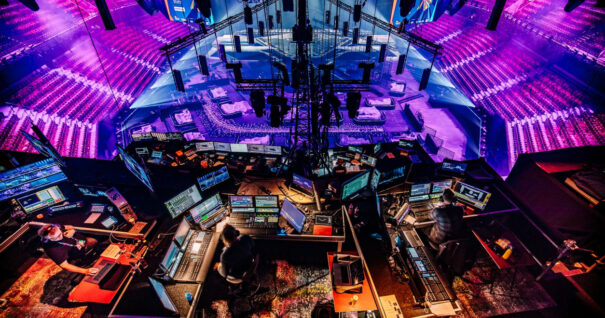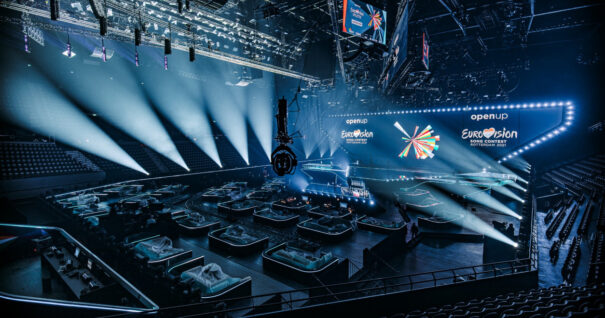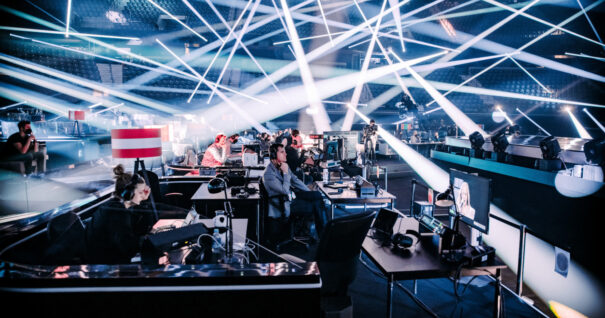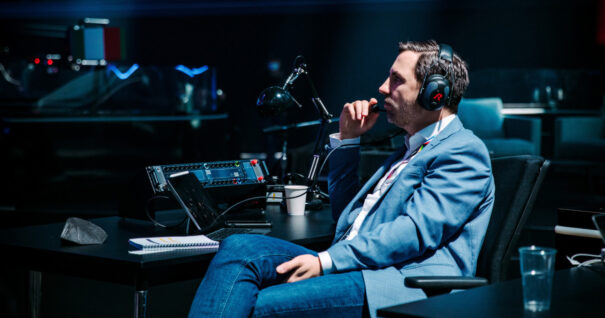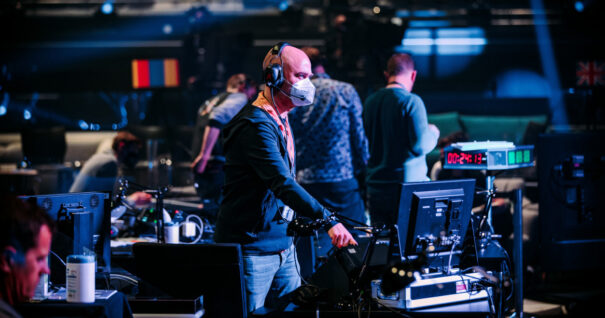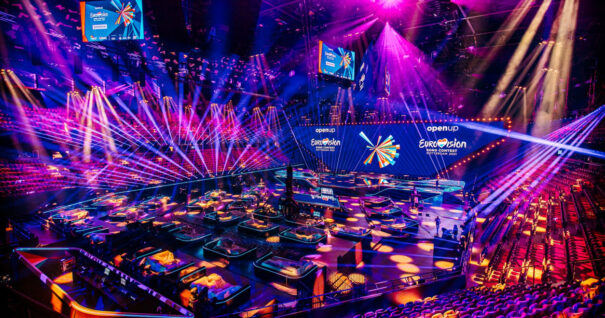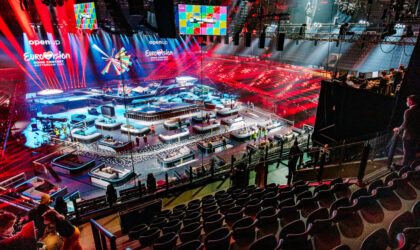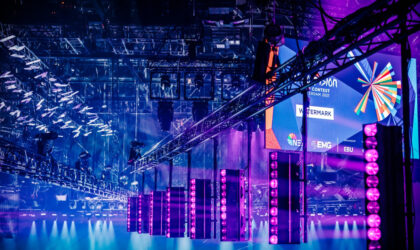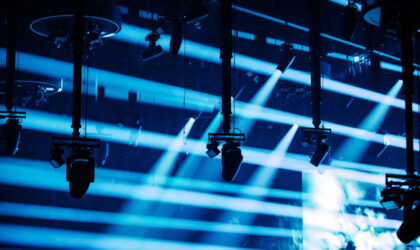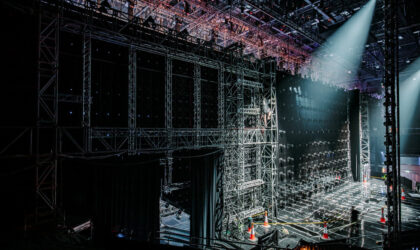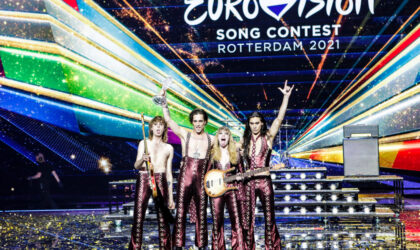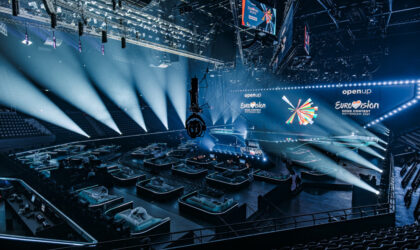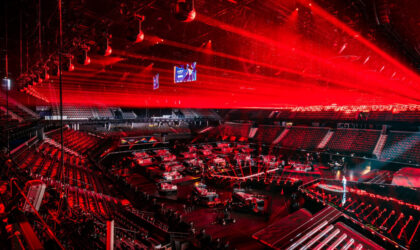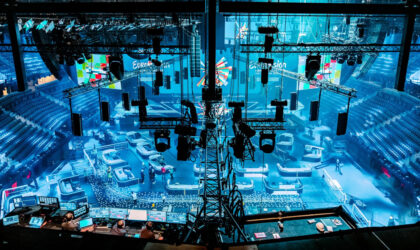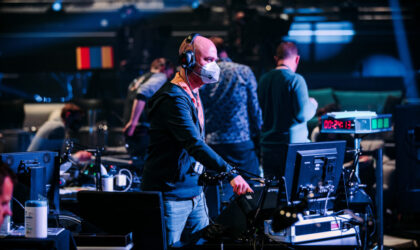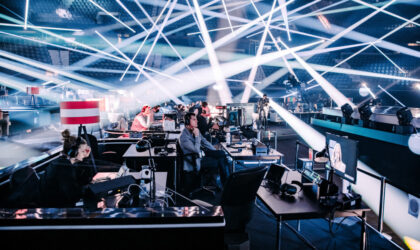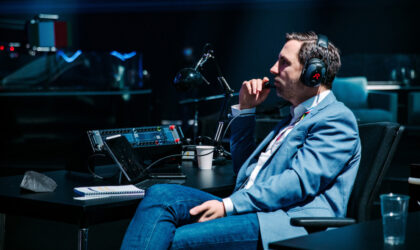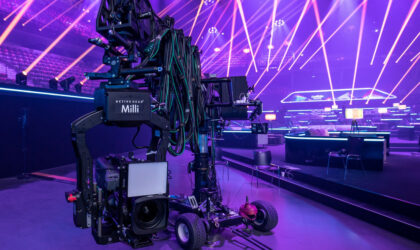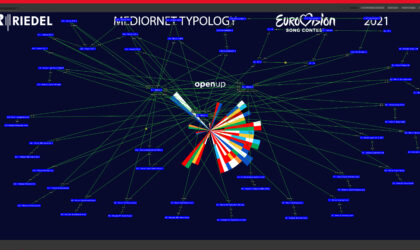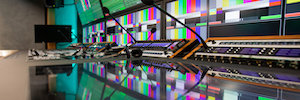5 key pillars that made the production of Eurovision 2021 possible
The Eurovision Song Contest is one of Europe’s leading television events. Every year, it attracts audiences of millions across the old continent. Its production involves a great deal of effort in both planning and execution, and it is always accompanied by numerous state-of-the-art technologies. Thurid Wagenknecht, Programme Manager Global Events and Yung-Min Lee, Senior Project Manager, from Riedel, share with Panorama Audiovisual readers 5 pillars of the technical execution of Eurovision through a videoconference from Rotterdam Ahoy, the venue of the 2021 edition of the festival.
Possibly, this latest Eurovision gala has been one of the most celebrated in a long time. With the impulse of NPO, NOS, Avrotros 和 EBU. United 和 NEP were responsible for the technical coordination of the event. Both companies decided to rely on Riedel for multiple tasks, such as radio communications, the management of audiovisual signals for the broadcast and distribution of images inside the Ahoy Arena; or the development of a complex system of accreditations, directly conditioned by the result of the 26,000 Covid-19 tests made to all staff.
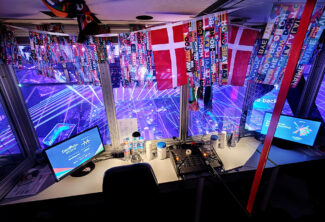 24 cameras were part of the production: seven surrounding the stage, one rail in front of the stage, one roof rail, two cranes, one double dolly, one single dolly, one 2D cable cam, one 1D cable cam, two steadicams, one fixed head and two shoulder camcorders. These capture devices, together with 130 video feeds, 140 intercom panels, 75 microphones, 1800 luminaires, five mobile units, a technical operations center, three support vehicles 和 60 EVS channels, served to shape a signal that could be seen all over Europe, Australia and the USA (via Peacock); with incoming connections from 40 different countries. It was no easy task, as Thurid Wagenknecht 和 Yung-Min Lee tell.
24 cameras were part of the production: seven surrounding the stage, one rail in front of the stage, one roof rail, two cranes, one double dolly, one single dolly, one 2D cable cam, one 1D cable cam, two steadicams, one fixed head and two shoulder camcorders. These capture devices, together with 130 video feeds, 140 intercom panels, 75 microphones, 1800 luminaires, five mobile units, a technical operations center, three support vehicles 和 60 EVS channels, served to shape a signal that could be seen all over Europe, Australia and the USA (via Peacock); with incoming connections from 40 different countries. It was no easy task, as Thurid Wagenknecht 和 Yung-Min Lee tell.
1. 365 days of preparation
Eurovision does not happen overnight. In fact, Yung-Min Lee goes so far as to say that it takes “more than 365 days”. There is extensive planning that involves thinking about what kind of solutions the format might need, even before coordination with the production companies begins. These conversations usually take place around October, eight months before the event.
This year’s process has been even longer, because the 2020 edition was postponed due to the global situation caused by the pandemic. It has involved health and prevention challenges that have led to a transformation of the technical planning initially planned for Rotterdam Ahoy itself. Thus, the installation, assembly and testing process has ended up taking a month and a half. “Production at the Ahoy started on April 6,” says Thurid Wagenknecht.
Upon arrival at the pavilion, the team set up different parts of the production as needs arose at each stage of the project. Wagenknecht explains that the first requirement was to implement the accreditation system and radio communications via TETRA. Soon after, the installation of the fiber cabling began to create the entire signal distribution infrastructure. The last major step was the intercommunications system, which usually waits until shortly before the various delegations arrive to complete the performances that will be seen in the semifinals and the grand final. In short, the installation takes between three and four weeks; the rehearsals, another two weeks.
2. Equipment used for the first time
The production of Eurovision 2021 evolves from year to year. As Wagenknecht laughingly comments, the changes come as you get “older and wiser.” Working on Eurovision, in his words, involves an “infinite learning curve” that makes each production different. There are elements that remain, but others that are rethought to deliver the best possible show to European audiences.
Lee details that, compared to the Tel Aviv edition (2019) where the intercom panels were connected via AES3 (“as had been the case for the past 15 years”), this time an AES67 network has been established. To be able to continue using older panels, Riedel NSA network adapters were integrated.
Other key elements used were the new 32-key RSP-1232 panels, “an improvement over the RCP-1028” due to their new buttons, colors and rings; Artist-1024 nodes and 60 Bolero intercoms, which Wagenknecht laughingly acknowledges were a status symbol for the crew members (the more buttons and intercoms, the more responsibilities and the higher the status); and a wide range of MediorNet IP products, such as the MuOn for the commentators’ audio lines or FusiOn for video distribution in the control room for the commentators.
Riedel has also been responsible for the complete equipment of the commentators’ stations, as well as the communication with the control rooms in each of the countries that have customized the EBU broadcast.
3. 48-hour accreditations
A crucial point handled by the team led by Wagenknecht was accreditations. Specifically, Riedel signed off the front-end of the entire management system, based on RFID (radio frequency identification).
Due to the pandemic and the protective measures in place, access was limited to 48 hours. This meant that after 48hours, if there was no new Covid-19 test certifying a negative result, the technician, delegation member or performer could not re-enter the venue perimeter.
One of the most complex workflows was to enable that, once a person enters the Covid-19 testing center, their entire accreditation is completely deactivated. In this way, they are pre-emptively quarantined until the expected negative result. According to Wagenknecht, these processes involve numerous software and hardware elements, so the coordination was “complex”.
4. The challenge of Covid-19
The creation of a perimeter has not meant normal day-to-day production. As Wagenknecht explains, each and every one of the measures recommended by the authorities in terms of distancing is complied inside the site.
There is a one-and-a-half-meter separation between each of the stations, FFP2 masks are mandatory, a large safety team is dedicated exclusively to ensuring that the measures are being followed, and stations with disinfectant and PPE are spread throughout the operations center – or rather, as Wagenknecht puts it, “every three meters”. These extraordinary measures have increased the space available for production, which in turn has led to the need to reinforce the communication equipment to cover the entire area.
Likewise, the EBU, host broadcasters and production teams have had to deal with several positives’ cases, which fortunately occurred outside the perimeter. This circumstance affected part of the Icelandic delegation or Duncan Laurence, winner of the 2019 edition. Fortunately, they were able to record a shot of their rehearsals, which was broadcast live during the grand final. There were also positives among the live production team, Wagenknecht recounts, although both NEP and United foresaw this possibility and had up to two people to fill in for each position from the start.
The distancing and prevention measures within the bubble have been exceptional, but also effective. Of the 26,000 tests carried out, only 0.06% were positive.
5. Continuously evolving production
What is for Wagenknecht one of the “most difficult productions” in television, given the number of people involved and the complexity of its organization, finds every year several ways to improve. On Riedel’s side, Lee details that new improvements such as MicroN UHD could possibly be integrated in the event that it is decided to opt for a broadcast for UHD (although he does not see it clear given that “many broadcasters are not ready to broadcast under this format”); or new extension panels for Riedel’s RSPs.
Even so, it is still too early to know what the technical realization of 2021 will be like. Italy, the country that will host Eurovision 2021 after Måneskin‘s victory, will have to decide what kind of production to build and what kind of equipment they decide to use. In any case, Lee feels confident: he is sure that they will be able to adapt to all the needs at the level of signal distribution or communication that will be presented to them in the future.
A report by Sergio Julián Gómez
Photo gallery
(click on any photo to start the carousel -scroll left and right by clicking on the arrow-.)
您喜欢这篇文章吗?
订阅我们的 饲料 而且你不会错过任何东西。



